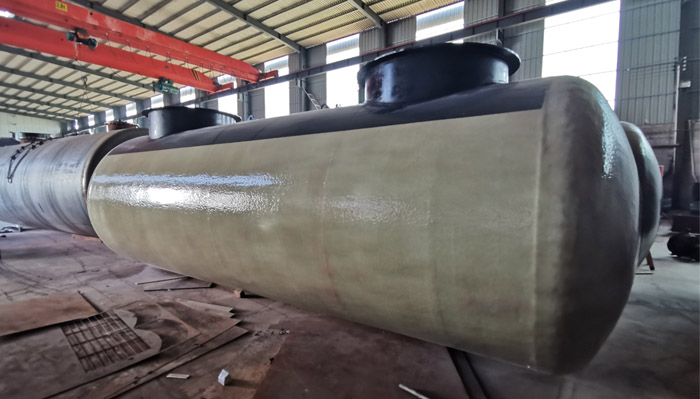Product Category
The correct quality inspection method of double layer oil tank
Date: Jan 25, 2021

Double-layer oil tanks are used as metal pressure vessels for storing flammable and explosive oils. During and after the manufacturing process, the quality inspection of the double-layer oil tanks is an indispensable step.
1. Double-layer oil tank wall test: carry out a water filling test on the newly built or repaired oil tank, check whether the double-layer oil tank wall is tight, and perform visual inspection of the oil tank wall panel and weld.
2. Pressure vessel wall thickness inspection: materials must be inspected and stored in the warehouse. Double-layer oil tanks on the ground are mainly inspected by ultrasonic, which is more efficient.
3. Double-layer oil tank bottom welding seam detection: When the vacuum leak test method is used to test the tightness of the bottom panel, apply soapy water to the weld seam and cover the vacuum box for observation.
4. Leak detection is achieved by detecting the change in the volume of the oil in the double-layer oil tank. This method is not easy to find small leaks. 5. Measure bottom pressure of double-layer oil tank and calculate the weight of medium in the tank for oil tank leak detection. If the quality continues to decrease, it indicates that the pressure vessel is leaking.
5. Measure bottom pressure of double-layer oil tank and calculate the weight of medium in the tank for oil tank leak detection. If the quality continues to decrease, it indicates that the pressure vessel is leaking.
6. Add dye to the water and check the leakage point by hydraulic test. In addition, you can listen to the sound on the wall of the pressure vessel or install a sound wave sensor on the wall of the tank, set up an observation well in the tank area for monitoring, and use a dipstick for oil tank level detection and leak detection.
7. When the double-layer oil tank is receiving and dispatching, leak detection is carried out according to the difference between the actual in and out volume.
1. Double-layer oil tank wall test: carry out a water filling test on the newly built or repaired oil tank, check whether the double-layer oil tank wall is tight, and perform visual inspection of the oil tank wall panel and weld.
2. Pressure vessel wall thickness inspection: materials must be inspected and stored in the warehouse. Double-layer oil tanks on the ground are mainly inspected by ultrasonic, which is more efficient.
3. Double-layer oil tank bottom welding seam detection: When the vacuum leak test method is used to test the tightness of the bottom panel, apply soapy water to the weld seam and cover the vacuum box for observation.
4. Leak detection is achieved by detecting the change in the volume of the oil in the double-layer oil tank. This method is not easy to find small leaks.

6. Add dye to the water and check the leakage point by hydraulic test. In addition, you can listen to the sound on the wall of the pressure vessel or install a sound wave sensor on the wall of the tank, set up an observation well in the tank area for monitoring, and use a dipstick for oil tank level detection and leak detection.
7. When the double-layer oil tank is receiving and dispatching, leak detection is carried out according to the difference between the actual in and out volume.
Last article:
Send Your Inquiry
We not only provide a good product, but also provide high quality service. If you are interested in our products,
you can contact us in the following ways.
you can contact us in the following ways.















































































































